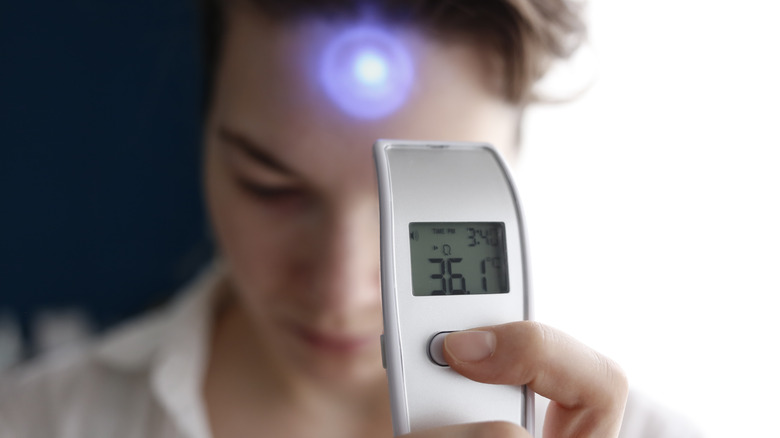The Average Human Body Temperature Isn't What You Think
If you are measuring your own temperature, chances are that you are hoping to see 98.6 degrees Fahrenheit (37 degrees Celsius). That is generally what everybody has been taught is the average human body temperature, but according to Harvard Health Publishing, things may have changed since this average was first determined.
The average human body temperature was initially calculated to be 98.6 degrees back in the mid-1800s when a German doctor named Carl Wunderlich measured the armpit temperatures of roughly 25,000 people. However, more recent studies have challenged the idea that these averages are still relevant, instead finding an average oral temperature of 97.5 degrees and an average body temperature of 97.9 degrees. This average varies between different demographics, with women and young people having higher temperatures on average than men and older people.
Even within the same person, body temperature tends to vary throughout the day, with higher temperatures in the evening. Women's body temperatures may also fluctuate throughout their monthly cycle. Exercise and food can also affect body temperature (per Healthline).
Why the average body temperature is falling
An analysis of studies conducted over nearly 160 years discovered that average body temperature has fallen by more than one degree (via eLife Sciences). Different tools of measurement do not seem to have played a significant role in the decrease in body temperature, as the reduction was seen even during periods of time when methods of measurement did not change. Getting to the root of this change is important because body temperature is critical to evaluating people's health and well-being.
Harvard Health Publishing theorizes that lower average body temperatures may be due to lower rates of infection. In the mid-1800s, syphilis and tuberculosis and other conditions that raise body temperature were rampant, and there were few effective treatments. The reduction in temperature may also be due to lower metabolic rate, which could be caused by higher average body mass or better medical treatments and health.
Regardless, it is important to check your own temperature when you're healthy to find out what temperature is normal for you. According to Healthline, a temperature that is 2 degrees Fahrenheit (1.1 degrees Celsius) higher than your healthy baseline is generally a sign that you have a fever.


